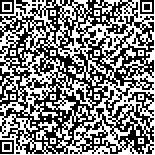下载中心
优秀审稿专家
优秀论文
相关链接
摘要

土壤水分不仅在地表水、能量以及碳循环中发挥着非常重要的作用,其时空变化也是影响和反映气候变化的关键因子。虽然被动微波遥感技术是目前监测大尺度范围土壤水分变化最为成熟的技术手段,但是其土壤水分产品空间分辨率往往较低(几十千米不等),不能满足区域和局地尺度的应用需求。鉴于这一问题,空间降尺度逐渐成为了提高被动微波土壤水分遥感产品空间分辨率的主要方式,也是当前遥感研究领域的热点之一。本文总结与分析了近20多年来国内外被动微波土壤水分遥感产品空间降尺度研究进展,系统归纳了经验性、半经验性和基于物理机理的3大类降尺度方法,并就各方法特征进行了详细说明,概述了各方法的优势和缺点。归纳而言,虽然被动微波土壤水分遥感产品空间降尺度方法众多,但可靠的高分辨率降尺度土壤水分产品仍较少,这与被动微波土壤水分遥感产品、降尺度关系模型方法以及降尺度辅助因子等有着直接的关联。未来相关研究应重点结合多源遥感数据建立适用性强、精度高的降尺度关系模型,进而实现时空无缝的高时空分辨率降尺度土壤水分产品的生产,为推动土壤水分遥感产品在农林业管理、自然灾害监测、水文过程分析等区域应用中提供支持。
Soil Moisture (SM) plays an important role in the global water, energy, and carbon cycle, and its spatial distribution is also one of the key components of global climate change. Although passive microwave remote sensing technology is the most effective way of monitoring SM distribution at global scale, these kind products are generally limited by their low spatial resolution, which further prevents them from meeting the requirements of regional applications. On this basis, spatial downscaling has gradually become an alternative way of improving the spatial resolution of passive microwave SM products and a research hotspot in the field of remote sensing. Therefore, this paper reviewed and summarized the progresses on passive microwave SM spatial downscaling in the past 20 years. In terms of the downscaling methods, they can be divided into three key categories: empirical, semi-empirical, and physical model-based downscaling methods. The empirical downscaling method is simple and can easily achieve large-scale downscaling but lacks in physical background on the downscaling process. However, empirical methods have been widely used in passive microwave SM spatial downscaling study due to their simplicity and practicability. Physical model-based methods usually use data assimilation or/and land surface process models as the downscaling relational model. Usually, the process is complex, resulting in the low applicability of the physical model-based method, but this method can often obtain the downscaling results with good accuracy. The semi-empirical downscaling method generally can ensure the accuracy of the downscaling results and the operability of the method itself. However, the applicability of the semi-empirical method is still limited by its uncertainty related to the linking model for soil moisture expression and also some downscaling factors. Although numerous passive microwave SM spatial downscaling methods exist, the available downscaled SM products with good accuracy are limited. Currently, few passive microwave downscaling SM products are continuously produced, including the SMOS L4V5 SM product produced by BEC and the active and passive fusion SM products generated by NASA SMAP/Sentinel-1. Although the two kinds of downscaling SM products have the same spatial resolution (1 km), both suffers from the poor spatial coverage. In general, there are still some problems and challenges should be considered for current spatial downscaling study for passive microwave SM product. Aiming at obtaining the downscaling results with high spatial resolution, good accuracy, seamless spatial coverage, and daily temporal resolution. The uncertainty in the downscaling model (the relationship between SM and the downscaling factors), the uncertainty in the original passive microwave SM products and their incomplete spatial coverage, and the uncertainty in the downscaling factors (such as the influence from cloud cover and topography) are the issues should be well addressed. Overall, the development of the spatial downscaling study for passive microwave SM products will also provide more references and opportunities for promoting the application of SM products based on remote sensing in various fields including agro-forestry management, water resource assessment, and natural disaster monitoring.

